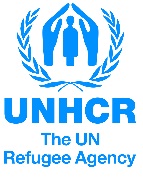New Report on Intikane refugee hosting area: Observing the sphere standards after all
The conflict in Mali which erupted in January 2012 led to the creation of three traditional refugee camps (Abala Mangaize, Tabareybarey) and two so-called “refugee hosting areas” (Zone d’Accueil des Réfugiés, ZAR, in French). The hosting areas are located in Tahoua region with Intikan in Tillia Department which covers an area of approximately 276 ha and a density of 25 persons/ha being UNHCR’s flagship operation in Niger. Intikane has the distinction of not being a camp, but a Hosting Area, which is an experimental concept, in order to adapt to the sociocultural and economic specificities of nomadic refugees. In Intikane unlike in a camp, people live dispersed and have the choice to move wherever they want within the perimeters covered by the area. UNHCR issued a report ( http://data.unhcr.org/SahelSituation/download.php?id=901 ) recently on the living conditions of more than13,000 nomadic refugees living with their livestock (cows, sheep, goats, horses, camels, sheep and donkeys) in the area. In all its missions, the UNHCR implements standards of humanitarian assistance in various areas of intervention (water and sanitation, health, nutrition, shelter / NFI, education) to protect and assist people concerned by its mandate. In the case of ZAR, it became evident that due to the nomadic and agro-pastoral specificity of the Tuareg people, the implementation of Sphere standards poses challenges which leads to this question: Are the Sphere standards applicable in the hosting area of Intikane? And if so, what provisions can further improve and assess the progress of assistance provided in the best compliance to nomadic lifestyle? Download the report here. “http://data.unhcr.org/SahelSituation/download.php?id=901”

Taps in the Intikane Refugee Hosting Area. ©UNHCR

